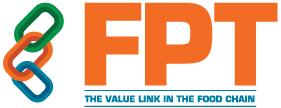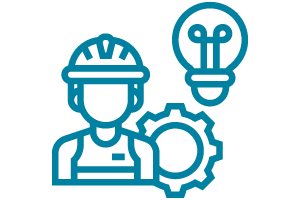Secondary Packing
Primary Packing, Secondary Packing, and Tertiary Packing are the three basic forms of packing, and it's vital to remember that each level serves a distinct function and has specific criteria to deliver things to consumers safely, effectively, and consistently.
The Primary packing encases and contains the medicinal substance directly. Secondary packing is the exterior packing of the main packing that bundles packets and further protects or labels the medicinal product. Tertiary packing is required for bulk handling, storage, and distribution. In the pharmaceutical industry, a vial or blister (Primary Packing) is placed inside a carton (Secondary Packing), which is then packaged into a shipment case (Tertiary Packing)
Secondary packing is used to convey items that have previously been packaged in primary packing. The primary packing's external packing is used to bundle packages and further protect or label the goods. The delivery box in which the Advil bottle is kept.
The Coke cans are kept in this case. On a two-for-one offer, the plastic wrap. Secondary packing includes all of these items. Secondary packing has a practical role in this regard. It prepares things for shipment by organizing or stabilizing them.
It also provides for easier and safer storage, so you know that when it's time for a manufacturer to ship out more devices, they'll arrive in good condition. The eventual recipient of the product is usually unaware of secondary transportation. As a result, secondary packing's desirable features are more utilitarian than aesthetic or marketing. Secondary packing should be robust enough to preserve your item while being easy to open so that staff refilling shelves can get to it without harming it.
Types of Secondary Packing
There are three basic forms of Secondary Packing, each with its own set of advantages and disadvantages depending on the application.
Chipboard boxes
Chipboard Boxes are made of a form of cardboard called chipboard. It is made up of glued-together layers of paper. Chipboard comes in a variety of thicknesses, and the strength and durability of each differ. Chipboard is less expensive than other secondary packing materials, but it is also less sturdy and resilient than other materials like corrugated cardboard. A cereal box a tea bag, or a carton are two obvious examples.
Corrugated Cases
Corrugated Cases are likewise composed of cardboard, although their structure differs from that of chipboard. A fluted sheet of paper is sandwiched between two layers of paperboard in corrugated boxes. The fluted sheet makes corrugated case walls sturdy and long-lasting. Corrugated cases can withstand being stacked and handled hard during travel, making them ideal for shipping containers.
Heat shrinkwrap
Heat Shrinkwrap is a form of polymer film that is used to wrap a product. The film is used to cover a variety of objects, including a case of water bottles. Heat is applied to the film, causing it to contract and shrink, securing the items in place. Although this sort of secondary packing is often less expensive, it adds to the workload at the retail site if the box must be opened and placed on the shelf.
In a congested market, Secondary Packing is an effective approach to strengthen your brand and increase product exposure. Whether you make a rainbow pack or use printed shrink wrap, you're increasing your chances of selling your goods and attracting customers. Retail-ready packing may give your product the visibility it deserves.
You have complete control over how your product reaches your customers with open displays. Your brand is prominently displayed, straight in front of your client's eyes, capturing their attention. In a crowded and competitive market, your items must lure customers' attention away from competitors' offerings and toward your own.
Why Secondary Packing is Necessary
Secondary packing is necessary for a variety of reasons, including physical and barrier protection, Secondary containment, Regulatory Compliance, and Patient Safety. Cartons, Trays, and film bundles are examples of secondary packing. Secondary packing can come in several shapes and sizes, but it will always have some amount of packing (Primary Packing).
Because Secondary packing is typically the first level of packing a consumer sees, its aesthetic is critical. Depending on the primary package it will hold, Secondary packing for clinical trials might take a variety of shapes.
A blister strip is a popular main packing used in the pharmaceutical business. Blister strips are made up of two layers of material that are sealed together and have a hollow in the middle for the product. Containing the blisters in a secondary wallet or blister card is the simplest method to gather them together, prevent tampering, and give the patient instructions.
These wallets provide more printing options, the flexibility to disguise batch numbers, and the ability to match the patient's dose schedule. Wallets are two pieces of material that are sealed together, similar to blisters.
The principal package is sandwiched between the layers rather than the medicinal product. Although transportation is a key benefit of secondary packing, it serves a more direct function daily, namely the protection of the product and primary package.
Because secondary packages are frequently handled by customers, they must safeguard the goods in case the package is mistreated. Customers make mistakes, and a major package, such as a glass vial, may drop and shatter. When a glass vial is stored in a folding carton, the likelihood of the primary container or product being destroyed is greatly reduced.
A Carton is another type of Secondary Packing that is utilized in both clinical trials and commercial items. Instead of cardboard, folding cartons and shipping boxes are composed of comparatively thin paperboard.
The thinner board is more durable and enables tighter, cleaner folds, a better printing surface, and a smaller overall footprint. Folding cartons may hold a wide range of basic items. Blisters, vials, bottles, or practically any type of primary packing that fits inside a carton can be stored there.
Cartons are advantageous for clinical work because they may be printed on while in production and tagged, and they often approximate the client's final commercial package arrangement. Cartons are also ideal for business packing for the same reasons. Cartons are a common choice for practically all secondary packing applications since artwork can be readily pre-printed on them.
Advantages of Secondary Packing
Workers could have easily kept up with the Secondary packing process in the early days of a company, making boxes, filling them, sealing them, and then preparing them for palletization.
As demand develops, depending on physical labor restricts future expansion while also increasing the danger of potential accidents or inadequate labor to reach daily production targets. You may prepare shipments faster by automating the packing process rather than hiring more workers.
Increases throughput rates
When you transition to automation, Automated packing technology can run considerably faster than a human can, thus improving production throughput. You can sell more items and stay up with market demand by increasing manufacturing speed.
Cost-cutting
Automated packing machinery can help your business save money. With rising minimum salaries and a labour shortage leading to higher hiring, training, and accident prevention expenses, automation of formerly manual packing activities can provide a surprisingly quick return on investment. Even after factoring in the expense of equipment maintenance, automating is frequently more cost-effective over time than hiring additional people.
Enhances employee happiness
Working on a factory assembly line might result in repetitive motion injuries. When you utilize machines to manufacture, Pack, Seal, and Palletize boxes, you free up your employees to focus on other activities, lowering their risk of injury and increasing their satisfaction with their work. Your company's productivity is likely to increase if your crew is more enthusiastic about the task they're performing.
Ensures consistency and quality
Automated Machinery is more exact and consistent than people, enhancing your quality and brand impression while decreasing losses due to damage or bad looks.
Our Secondary Packing Principals
Kiron Food Processing Technologies, with Blueprint Automation, has a lot of expertise with secondary packing to help with clinical trial problems and compliance. Blueprint automation and the Jasa Packing system both use secondary packing, the most common of which is a folding carton. Wallets for blister packages and shrink-wrapped bundles for bottled items are two more typical types.
Blueprint Automation and Jasa Packing Solution both recently installed serialisation technology for their bottle and carton lines to satisfy expanding regulatory requirements. This enables serial numbers to be printed on these supplementary packages. An in-line bundler was also approved for secondary bottle packing.










